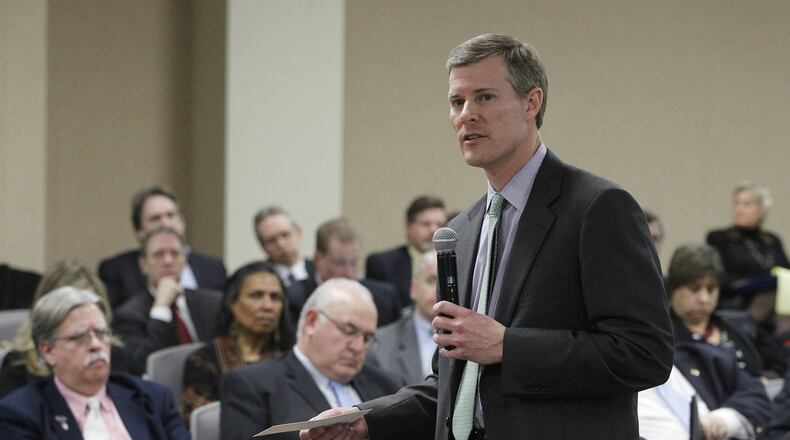John Minor, the organization’s former president and chief investment officer, made $621,322 last year, a 16 percent increase of $86,864 from 2017. J.P. Nauseef, former leader of the Dayton Development Coalition, took over as JobsOhio president earlier this month.
» RELATED: Payroll Project: See how much Wright State’s top paid employees make
Dana Saucier, vice president and head of economic development for JobsOhio, earned $353,099 in 2018. The vice president position was not on the JobsOhio payroll in 2017, according to an updated annual report.
“The compensation paid to JobsOhio associates is comparable to that paid to employees of other private nonprofit economic development organizations,” said JobsOhio spokesman Matt Englehart.
But, analysts at Ohio political think tanks questioned the payroll spending on JobsOhio employees and told the Dayton Daily News that the public deserves more information to know whether the organization’s leaders deserve the pay they’re receiving. JobsOhio reports the total compensation of its positions each year to the Ohio Development Services Agency, though employees names are not included in the listing.
Everything happening at JobsOhio may be “above board” but providing pay information without explanation can create a negative perception, said Greg Lawson, research fellow at The Buckeye Institute.
“I think a lot of this comes back to the relative lack of transparency that JobsOhio has historically had since its inception. (It’s) hard to ascertain what the correct pay should be for folks working there without some more detailed information,” Lawson said. “When the average person sees numbers like that they’re going to go: ‘What a sweetheart deal. Where can I get mine?’”
The JobsOhio payroll is reflective of larger economic issues facing Ohio and the country as a whole, said Hannah Halbert, project director at the left-leaning Policy Matters Ohio. The organization’s leaders are “cleaning up in terms of raises,” Halbert said, while other Ohioans are still struggling to earn a living.
» LOCAL: Sinclair to start offering 2 bachelor’s degrees in fall
Since JobsOhio is funded with taxpayer dollars, it would make more sense for executives to receive performance evaluations that would be made public, similar to what is often done with public college presidents, Lawson said. JobsOhio is funded through Ohio liquor operation profits.
The nonprofit’s performance, Englehart said, is evident in the work achieved last year by JobsOhio.
In 2018, the agency worked on 266 projects with companies that committed to create a record 27,071 new jobs and $1.3 billion in additional payroll, Englehart said. That amounts to a $9.6 billion increase in capital investment year over year.
Halbert sees the nonprofit’s performance differently. A lot of job growth has happened in Columbus while Ohio’s other cities have been left out, she said.
Ohio has also failed to rebound from the Great Recession as quickly as the rest of the country, Halbert said. Ohio’s unemployment rate was reported at 4.7 percent in January, more than a full point higher than the most recent U.S. unemployment rate of 3.8 percent.
“I’m sure there’s some large deals they could point to,” Halbert said. “But, in terms of really changing the economic story of Ohio, I’m not sure that’s really happening.”
FIVE FAST READS
• UD Police Chief: School can’t have ‘repeat’ of last year’s St. Patrick’s Day
• WSU faculty union starts GoFundMe page to recoup wages lost during strike
• Easton to anchor expansion with new store in 2019
• Chlorine leak response at WPAFB lasted 3 hours
• EXPERT: Wright-Patterson ‘crucial to avoiding a defeat if there’s a World War III’
About the Author
